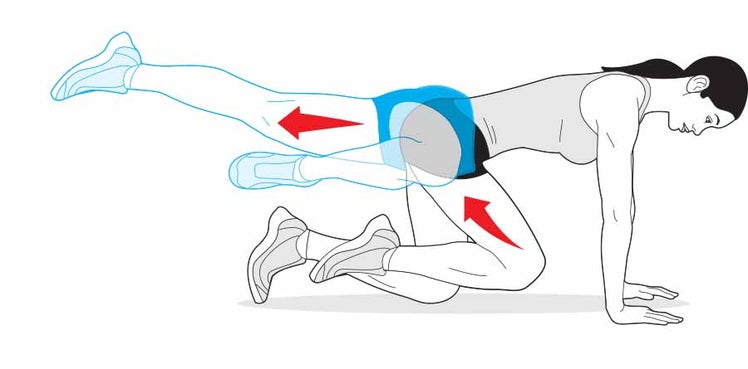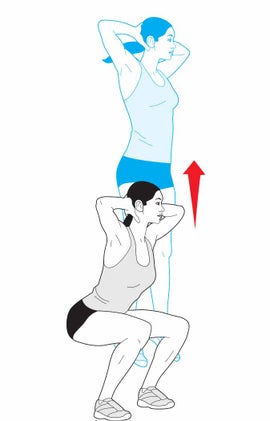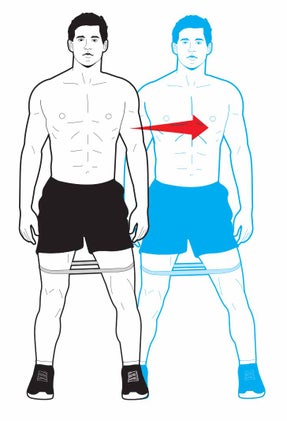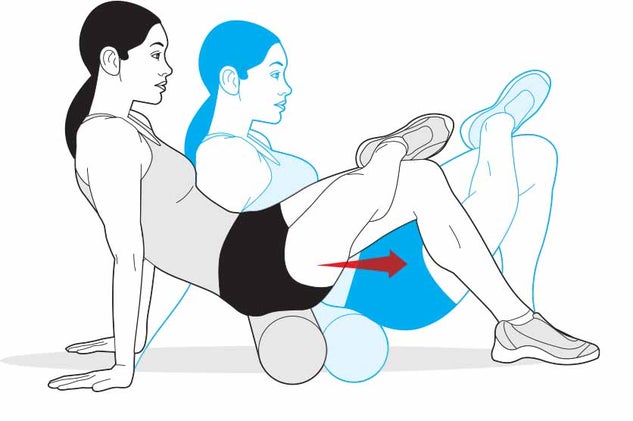New perk! Get after it with local recommendations just for you. Discover nearby events, routes out your door, and hidden gems when you sign up for the Local Running Drop.

Learn how to treat and prevent this lower-back and buttock pain that is common among runners and triathletes.
The Symptoms
Pain in the lower back and/or buttocks, sometimes feeling as if it’s deep inside the buttock muscles. It may be too painful to sit on the affected buttock. The pain and/or tingling can radiate down the backs of the legs as well.
What’s Going On In There?
The piriformis muscle runs behind the hip joint and aids in external hip rotation, or turning your leg outward. The catch here is that the piriformis crosses over the sciatic nerve. The piriformis muscle can become tight from, for example, too much sitting (a problem many working people can relate to). The muscle can also be strained by spasm or overuse. In piriformis syndrome, this tightness or spasm causes the muscle to compress and irritate the sciatic nerve. This brings on lower-back and buttock pain, sometimes severe. The diagnosis is tricky because piriformis syndrome can very easily be confused with sciatica.
The difference between these diagnoses is that traditional sciatica is generally caused by some spinal issue, like a compressed lumbar disc. Piriformis syndrome becomes the go-to diagnosis when sciatica is present with no discernible spinal cause.
Runners, cyclists and rowers are the athletes most at risk for piriformis syndrome. They engage in pure forward movement, which can weaken hip adductors and abductors, the muscles that allow us to open and close our legs. Throw in some weak glutes, and all those poorly conditioned muscles put extra strain on the piriformis. And you’ve got a painful problem.
Another risk for runners: Overpronating (when your foot turns inward) can cause the knee to rotate on impact. The piriformis fires to help prevent the knee from rotating too much, which can lead to overuse and tightening of the muscle.
RELATED – Med Tent: How Do I Treat Back Pain?
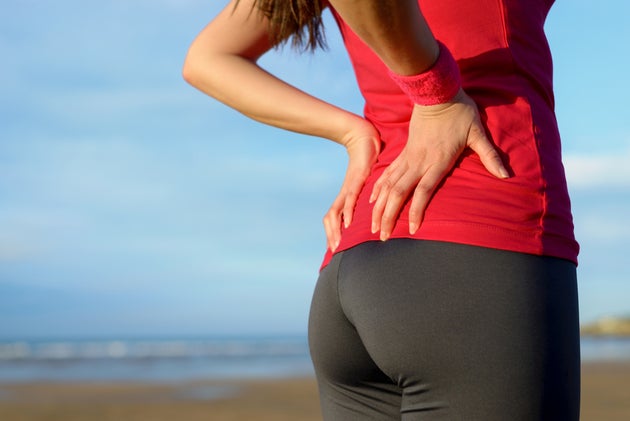
Fix It
• Employ dynamic rest. Stop the offending activity (if your pain is moderate to severe, you’ll want to anyway). Use upper-body workouts to maintain fitness. Core work will probably be a problem because your lower back and glutes will hurt. Let the pain be your guide and back off immediately if you do anything that hurts.
• Try an NSAID. An anti-inflammatory like ibuprofen or naproxen can help with swelling and inflammation.
• Stretch your hip rotators. As pain allows, try to gradually open up your hips by stretching your hip flexors and rotators. These two stretches can help:
Seated Piriformis Stretch
While sitting in a chair with your back straight, rest your ankle on your opposite knee. Then gently press down on your knee until you feel a stretch in your hip. Hold for 10 to 15 seconds. Repeat several times for each hip.
Lying Piriformis Stretch
Lie on your back with your knees raised and your feet flat on the floor. Put your right ankle on your left knee. Raise your left foot while pressing down on your right knee until you feel the stretch in your hip and buttock. Hold for 10 to 15 seconds. Repeat several times, then reverse the leg positions to stretch the left side and do a few reps.
Prevent It
Many of the interconnected muscles in this region—piriformis, glutes, hip flexors, hamstrings, quads—support one another, and weakness in one area can mess up the works. In short, if you want healthy piriformis muscles, you need to prioritize total-body fitness.
RELATED: IT Band Pain Stretches, Treatment And Prevention
 Exercise #1: Fire Hydrant In-Out
Exercise #1: Fire Hydrant In-Out
Get down on your hands and knees with your palms flat on the floor and shoulder-width apart. Relax your core so that your lower back and abdomen are in their natural positions. Without allowing your lower-back posture to change, raise your left knee as close as you can to your chest (your knee may not move forward much). Keeping your left knee bent, raise your thigh out to the side without moving your hips. Kick your raised left leg straight back until it’s in line with your torso. That’s one rep.
RELATED: Strengthen Your Back With This One-Minute Exercise
 Exercise #2: Bodyweight Jump Squats
Exercise #2: Bodyweight Jump Squats
Place your fingers on the back of your head and pull your elbows back so that they’re in line with your body. Perform a bodyweight squat until your thighs are parallel to the floor, then explosively jump as high as you can (imagine you’re pushing the floor away from you as you leap). When you land, immediately squat and jump again. Hold dumbbells at your side to make it more challenging.
RELATED: Power Boost Your Brick Runs With Plyos
 Exercise #3: Lateral Band Walks
Exercise #3: Lateral Band Walks
Place both legs between a miniband and position the band just above your knees. Take small steps to your right for 20 feet. Then sidestep back to your left for 20 feet. That’s one set.
RELATED: Take Care Of Your Kinetic Chain
 Exercise #4: Glutes Roll
Exercise #4: Glutes Roll
Sit on a foam roller with it positioned on the back of your left thigh, just below your glutes. Cross your left leg over the front of your right thigh. Put your hands flat on the floor for support. Roll your body forward until the roller reaches your lower back. Then roll back and forth. Repeat with the roller under your right glute.
More “Med Tent” articles and videos from Dr. Jordan Metzl.
New York City sports medicine specialist Jordan D. Metzl, M.D. is a 29-time marathon runner and 10-time Ironman finisher. His new book, The Athlete’s Book of Home Remedies, has more than 1,000 tips to fix all types of injuries and medical conditions.
Join in the conversation about everything swim, bike and run. “Like” us on Facebook.
